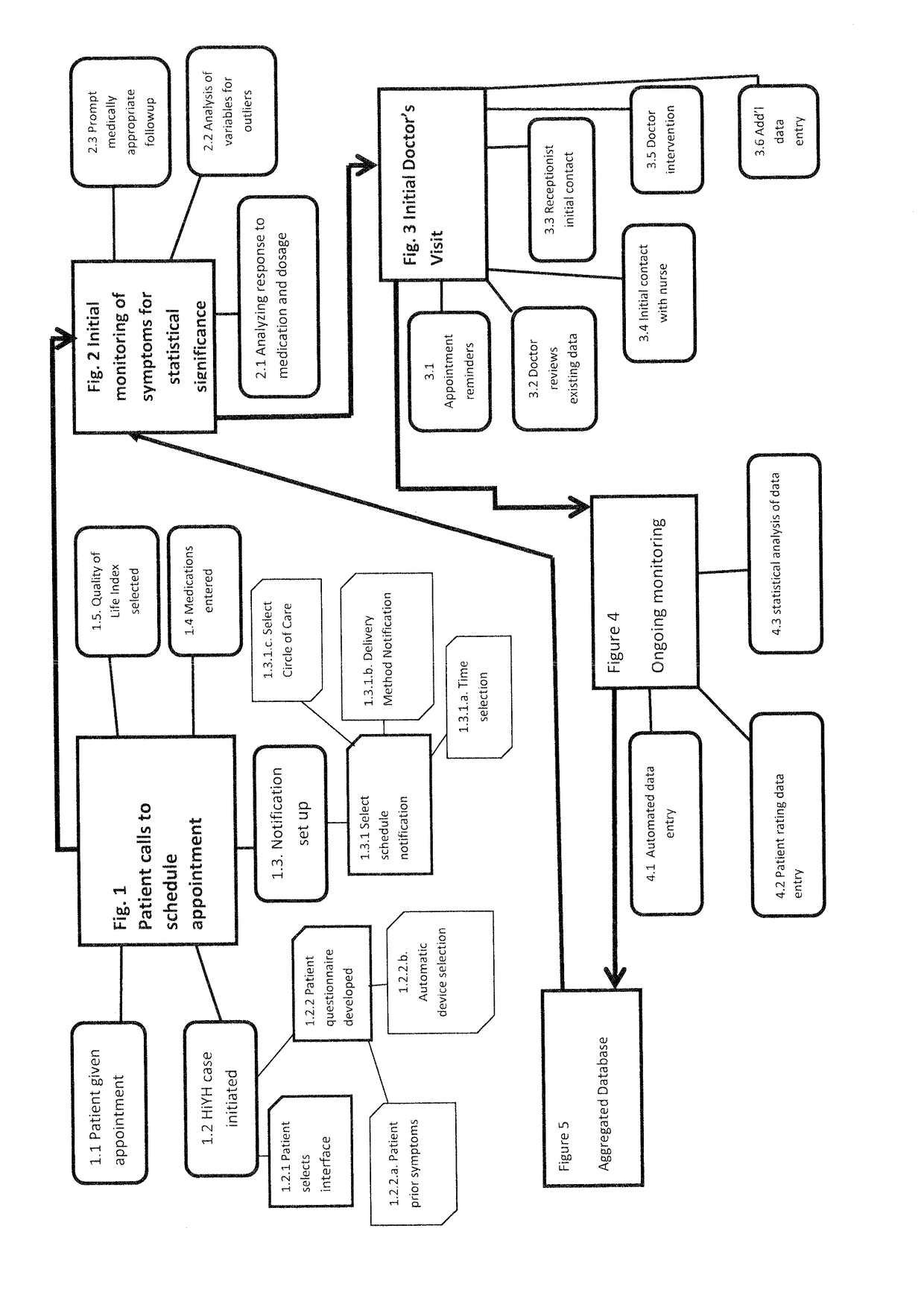Health In Your Hands
- Summary
- Abstract
- Description
- Claims
- Application Information
AI Technical Summary
Benefits of technology
Problems solved by technology
Method used
Image
Examples
Embodiment Construction
[0029]The invention embodied in this Patent Application. HiYH (for Health in Your Hands) is a single system design, within-patient data analysis system with a proprietary algorithm feat revolutionizes our understanding of what real change is for each individual patient rather than relying on a “one-size-fits most” approach to medical decision-making. The system detects outliers (change in symptoms, side effects, and quality of life indicators) AND determines the relationship between change and meditation dose for that individual patient. HiYH will also be useful for determining the degree to which an individual is experiencing placebo effect. Not only will HiYH find the right drug that works in a particular patient's body; it will also have the capacity to determine, through SSD design, to determine how much of that is due to placebo effect. HiYH has developed a system for repeatedly capturing Big Data, generating a hypothesis (e.g., this medication improves this symptom) and testin...
PUM
 Login to View More
Login to View More Abstract
Description
Claims
Application Information
 Login to View More
Login to View More - R&D
- Intellectual Property
- Life Sciences
- Materials
- Tech Scout
- Unparalleled Data Quality
- Higher Quality Content
- 60% Fewer Hallucinations
Browse by: Latest US Patents, China's latest patents, Technical Efficacy Thesaurus, Application Domain, Technology Topic, Popular Technical Reports.
© 2025 PatSnap. All rights reserved.Legal|Privacy policy|Modern Slavery Act Transparency Statement|Sitemap|About US| Contact US: help@patsnap.com


